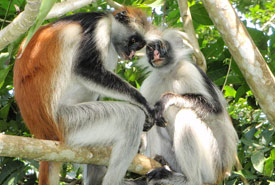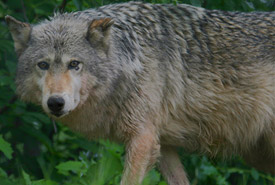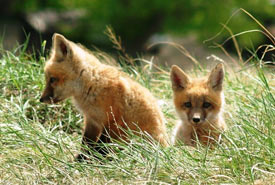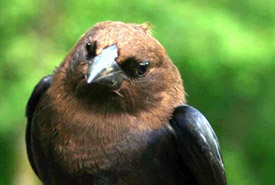You think your relatives are wild? Take a look at nature’s own families

Red colobus monkeys in Jozani forest. Endemic to Zanzibar (Photo by Olivier Lejade, Wikimedia Commons)
With Family Day on the doorstep, what better way to share facts about animals with interesting social structures than with your own tribe?
Monkeys have strong family dynamics. Like humans, they spend their lives in large communities or social groups referred to as troops or tribes. These family dynamics tend to be based on a tribe's diet and eating habits. Being surrounded by a large community or family like dynamic helps protect the tribe from predators and maintain scarce food resources, such as fruit. Leaf-eating groups, such as colobus monkeys, will form smaller groups since there is lower competition among other species.
Vegetarian orangutans tend to lead a reclusive life, except for when a mother is raising her child. Once the child is grown, they will separate, similar to a young adult human leaving for college or university. Yet unlike students, the orangutan will not return home.

Eastern wolf (Photo by Manuel Henriques)
Canada is home to many species that, like monkeys, share tight family like bonds. Wolf species across the country run in packs; a dynamic closely comparable to that of a nuclear human family. An eastern wolf (commonly referred to as the Algonquin wolf) pack is comprised of an alpha, or breeding, pair of male and female wolves that parent the group. Responsibilities of raising the young are shared communally among members of the pack. This structure allows wolves to travel large distances, hunt large prey and maintain their territory while protecting each other from harm.

Red fox kits (Photo by NCC)
Similar to wolves, foxes have tight-knit bonds with their own. While humans tend to gather in living rooms, red foxes will dig main dens for winter living, birthing and raising their young. Smaller dens are dug throughout their territory for emergency hideouts from predators and for food storage and are often connected to the main den. This behaviour is similar to that of swift fox, an endangered species that inhabits many of the Nature Conservancy of Canada's prairie properties.

Brown-headed cowbird (Photo by Stephen Davis)
Adoption is something that occurs in both the human and animal world. Brown-headed cowbirds can lay up to 40 eggs during their mating season, without raising a single chick. Instead, they will lay their eggs in nests made by other bird species. These species will adopt the cowbird chicks and raise them as their own.
Unlike the brown-headed cowbird, most warbler species have very strong maternal instincts. The responsibility of parenting cowbird chicks tends to fall on warblers despite the chicks growing larger than the size of the adult warbler!
So whether it is monkeys from jungles far away or families in your own backyard, take this Family Day to learn about a family not so different from your own.


